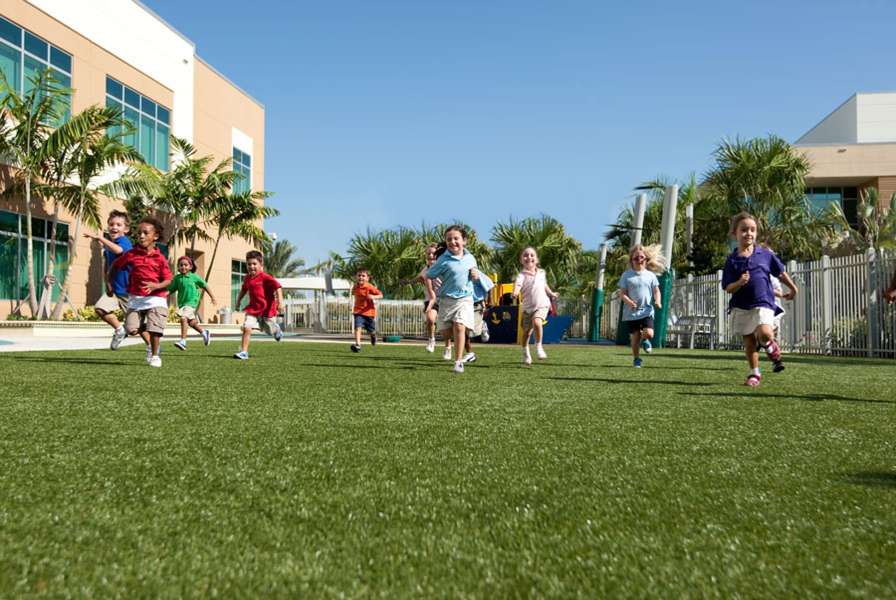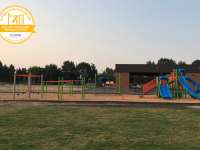Physical activity in play is critical for healthy lifestyles and the development of the mind, body, and spirit. Physical activity contributes toward a healthy body composition, psychological well-being, and assists in bone development. Physical activity, involving the forceful contraction of muscles of the body, is essential to the growth and development of the skeletal, muscular, nervous, and cardio-respiratory systems of the human body, and plays a major role in burning calories, thus helping to maintain a healthy balance between the amount of muscle mass and fatty tissue of all children, including children with disabilities.
One in three children between the ages of 2-19 is overweight or obese and prevalence estimates of obesity in the U.S. derived from the National Health and Nutrition Examination Survey, conducted by the National Center for Health Statistics of the CDC shows that obesity has more than tripled among children and adolescents from just one generation ago. Childhood obesity often leads to adult obesity.
In play, unlike organized activities, children naturally enjoy physical activity with little to no prompting by adults to encourage the activity. A study on play investigated the play choices and estimated caloric expenditure of pre-kindergarten through third grade children on an outdoor play structure over 20 weeks. The average expenditure of estimated activity calories during 30 minutes of free play for their first time on the play structure was 72 calories, after ten weeks 71 calories and after 20 weeks a significant increase to 78 calories. This data supports the need and importance of providing play structures at home, day care centers, elementary schools, and parks to support children’s development and overall health.
The U.S. Department of Health and Human Services issued Physical Activity Guidelines for Americans which state that children and adolescents should engage in 60 minutes or more of physical activity daily, which includes aerobic, muscle, and bone strengthening activities, and also states that young people should be encouraged to participate in age-appropriate, enjoyable, and diverse activities. With a daily 30-minute program of activity-based physical education, approximately half of the recommended daily expenditure of 150 activity calories would be met. When school schedules restrict physical activity, children do not compensate at home. In addition, children show greater physical activity after school when it occurs during the day. Parks and playgrounds can provide opportunities to play and may increase unstructured physical activity and it has been found that if children can easily access safe parks and playgrounds, they are more likely to engage in recreational physical activity there. The built environment of a community affects children’s opportunities to safely access physical activity and playgrounds, parks, and green spaces within communities. Resources to low-income neighborhoods should be a priority to ensure that all children have opportunities for play and active lifestyles.
Research has found that physical activity is related to improvements in mental health, helping to relieve symptoms of depression and anxiety and increase self-esteem. A recent study on the impact on education-related outcomes for school-based Physical Education, recess, classroom-based physical activity, and extracurricular physical activities found that these approaches had either a positive effect on academic achievement or, at minimum, did not detract from academic outcomes. Safety and liability concerns, emphasis on testing and need for more instructional time, budget cuts, and fears of disrupting work patterns are some of the reasons cited for some school systems’ decision to eliminate opportunities for free play outdoors during recess.
Research suggests that these unstructured play opportunities during recess can play a positive and important role in the learning, behavior, social development, and health of elementary school children. Programs such as Play On!: Playground Activities to Promote Youth Fitness developed in partnership by Shape America and PlayCore, can further help promote physical activity, fun, and learning during recess, physical education, or activity breaks, while also meeting national standards for physical education through play.
There are multiple national efforts to find and implement ways to engage children and adolescents of all abilities in healthy eating and regular physical activity. Active Schools helps schools access best practices, programs, and resources to increase physical activity, and deploy strategies to engage champions, influencers, and decision-makers to influence active school change. The Centers for Disease Control and Prevention released the School Health Guidelines to Promote Healthy Eating and Physical Activity describing school health guidelines including coordination of school policies and practices, school nutrition services, physical education and physical activity programs, health education, family and community involvement, and professional development for staff.
We must value and provide our children with every opportunity to be physically active in play; they need it, they desire it, and they deserve it.
This article was written for Words on Play®: A treatise on its value by leading play scholars™ by Louis Bowers, Ph.D., Distinguished University Professor Emeritus, University of South Florida
Dr. Louis Bowers has been a teacher, researcher, professional leader, grant writer, and administrator in higher education for 40 years. Dr. Bowers was an early and continuous leader in the development of programs of physical education for persons with disabilities. In 1974, he conducted the first research in the design and evaluation of accessible play structures for children with disabilities. In 1974, he conducted the first research in the design and evaluation of accessible play structures for children with disabilities and has designed over 80 Developmental Play Centers throughout North America. He has been recognized with university, state, and national outstanding teaching, research , and service awards. Through support from PlayCore, Dr. Bowers conducted independent research on the comparisons of physical activity on play structures between age groups.
Sources for this article can be found on pages 26-27 in Words on Play®.



